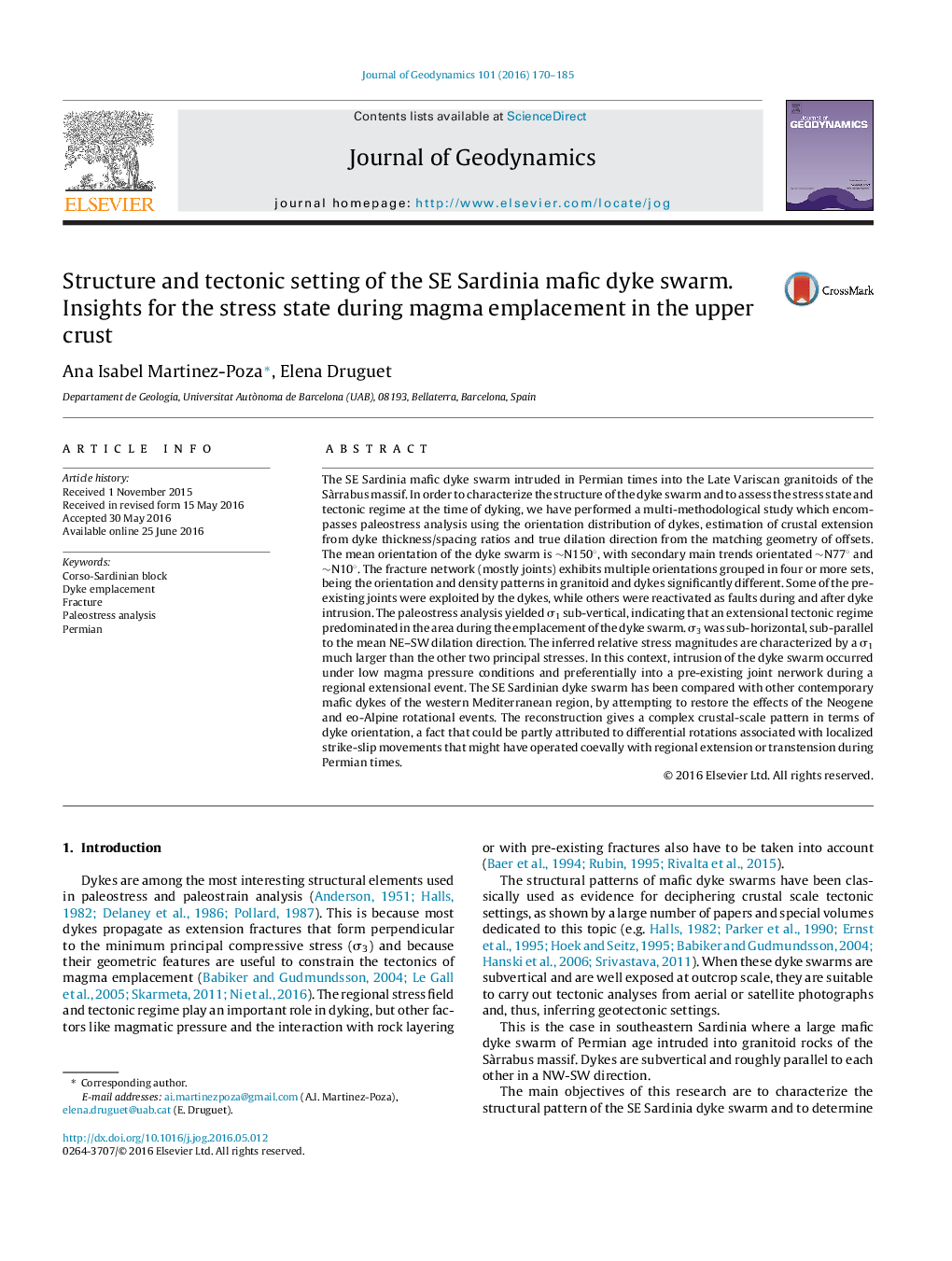| کد مقاله | کد نشریه | سال انتشار | مقاله انگلیسی | نسخه تمام متن |
|---|---|---|---|---|
| 4687923 | 1635749 | 2016 | 16 صفحه PDF | دانلود رایگان |
• A structural analysis was performed in the Permian mafic dyke swarm of SE Sardinia.
• Dykes intruded into pre-existing joints during regional NE-SW-directed extension.
• Permian mafic dykes of SW Europe show a complex crustal-scale orientation pattern.
The SE Sardinia mafic dyke swarm intruded in Permian times into the Late Variscan granitoids of the Sàrrabus massif. In order to characterize the structure of the dyke swarm and to assess the stress state and tectonic regime at the time of dyking, we have performed a multi-methodological study which encompasses paleostress analysis using the orientation distribution of dykes, estimation of crustal extension from dyke thickness/spacing ratios and true dilation direction from the matching geometry of offsets. The mean orientation of the dyke swarm is ∼N150°, with secondary main trends orientated ∼N77° and ∼N10°. The fracture network (mostly joints) exhibits multiple orientations grouped in four or more sets, being the orientation and density patterns in granitoid and dykes significantly different. Some of the pre-existing joints were exploited by the dykes, while others were reactivated as faults during and after dyke intrusion. The paleostress analysis yielded σ1 sub-vertical, indicating that an extensional tectonic regime predominated in the area during the emplacement of the dyke swarm. σ3 was sub-horizontal, sub-parallel to the mean NE–SW dilation direction. The inferred relative stress magnitudes are characterized by a σ1 much larger than the other two principal stresses. In this context, intrusion of the dyke swarm occurred under low magma pressure conditions and preferentially into a pre-existing joint nerwork during a regional extensional event. The SE Sardinian dyke swarm has been compared with other contemporary mafic dykes of the western Mediterranean region, by attempting to restore the effects of the Neogene and eo-Alpine rotational events. The reconstruction gives a complex crustal-scale pattern in terms of dyke orientation, a fact that could be partly attributed to differential rotations associated with localized strike-slip movements that might have operated coevally with regional extension or transtension during Permian times.
Journal: Journal of Geodynamics - Volume 101, November 2016, Pages 170–185
